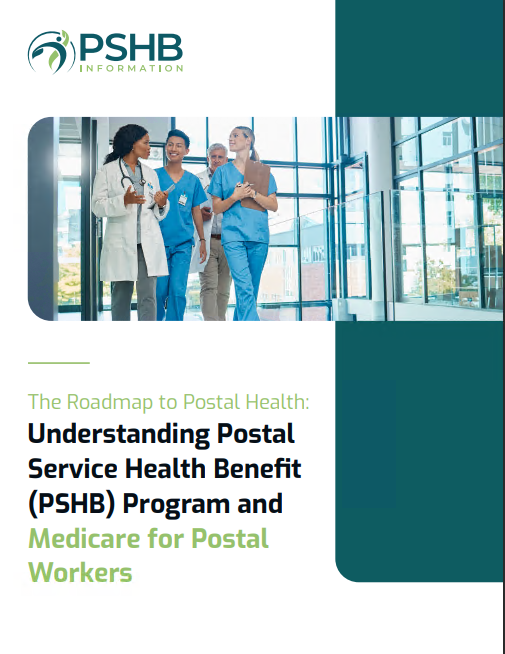Key Takeaways:
-
The 2025 transition to the Postal Service Health Benefits (PSHB) program marks a significant shift for USPS retirees, presenting opportunities to align your healthcare needs with tailored plan offerings.
-
Understanding the key changes and benefits of PSHB ensures you make the most of your retirement health coverage while avoiding potential coverage gaps.
A New Chapter for Postal Health Benefits
If you’re a USPS retiree or soon-to-be retiree, 2025 is the year to take a close look at your health coverage. With the Federal Employees Health Benefits (FEHB) program transitioning to the new Postal Service Health Benefits (PSHB) program, there are pivotal changes that you need to understand. This isn’t just a name change; it’s a complete restructuring designed specifically for postal workers and retirees. Whether you’re currently enrolled or looking to switch plans, now is the perfect time to evaluate your options.
Why PSHB Is Tailored for USPS Retirees
PSHB is exclusively designed for postal employees, retirees, and their eligible family members. Unlike FEHB, which served all federal employees, PSHB focuses solely on the unique needs of the USPS community. This dedicated approach means plans are optimized to better reflect the healthcare demands of postal workers, often including enhanced benefits and cost-sharing structures.
What Makes PSHB Different?
-
Focused Coverage: Tailored specifically for USPS retirees, ensuring your unique healthcare needs are met.
-
Integrated Medicare Options: Many PSHB plans offer seamless coordination with Medicare, helping reduce out-of-pocket costs.
-
Enhanced Benefits: Options often include robust dental, vision, and hearing coverage.
Key Timelines You Should Know
Timing is everything, and understanding the deadlines associated with PSHB is essential. Missing a key date could lead to coverage gaps or missed opportunities to enroll in the most beneficial plan.
-
Open Season Enrollment: The 2024 Open Season ran from November 11 to December 13, with changes taking effect January 1, 2025. During this time, you had the opportunity to switch plans or review your current benefits.
-
Qualifying Life Events (QLEs): Outside of Open Season, only significant life changes, such as marriage or the birth of a child, allow plan modifications.
-
Medicare Enrollment: If you’re eligible for Medicare, coordination with PSHB becomes critical. Retirees aged 65 or older must be enrolled in Medicare Part B to maintain PSHB coverage unless exempt.
How PSHB Coordinates with Medicare
For Medicare-eligible retirees, PSHB offers a streamlined integration process. Enrolling in Medicare Part B not only ensures compliance with PSHB requirements but can also significantly reduce your out-of-pocket costs.
Key Benefits of Coordination:
-
Lower Premiums: Many plans provide premium reimbursement or credits for those enrolled in Medicare Part B.
-
Reduced Deductibles: Some PSHB plans waive deductibles for Medicare enrollees.
-
Comprehensive Coverage: Combining Medicare and PSHB often results in fewer gaps in care, particularly for prescription drugs, hospital stays, and specialist visits.
If you retired before January 1, 2025, and are not enrolled in Medicare Part B, you may qualify for an exemption from the Part B enrollment requirement. However, enrolling in Medicare Part B still remains a wise choice to maximize your benefits.
Cost Savings Opportunities with PSHB
PSHB plans are structured to offer value while meeting healthcare needs. While exact costs depend on your selected plan, the program’s design emphasizes affordability.
Cost Highlights for 2025:
-
Medicare Integration Savings: Retirees enrolled in both PSHB and Medicare Part B often see lower premiums and waived deductibles.
-
Prescription Drug Coverage: All PSHB plans include prescription drug benefits, with a $2,000 annual out-of-pocket cap under Medicare Part D, significantly reducing the financial burden for high-cost medications.
-
Family Plan Options: Tailored plans ensure that eligible family members—whether spouses or dependents—receive coverage that aligns with their needs.
Understanding PSHB Plan Options
With PSHB, you gain access to a wide range of plans, from comprehensive coverage to more cost-effective options. Reviewing the Annual Notice of Change (ANOC) each year keeps you informed about updates to premiums, benefits, and cost-sharing structures.
Plan Features to Consider:
-
Provider Networks: Ensure your preferred doctors and hospitals are included.
-
Specialty Care: Check coverage for services such as dental, vision, and hearing.
-
Prescription Benefits: Review formularies to ensure your medications are covered at an affordable rate.
Making the Most of PSHB Benefits
Navigating your benefits may seem overwhelming, but there are ways to maximize your PSHB plan. Start by assessing your healthcare priorities—from routine care to managing chronic conditions—and then compare available options.
Steps to Maximize Benefits:
-
Use Preventive Services: Many PSHB plans cover annual check-ups, screenings, and vaccines at no extra cost.
-
Review Medicare Integration: Coordinate your PSHB and Medicare benefits to minimize out-of-pocket expenses.
-
Leverage Additional Benefits: Take advantage of supplemental services like fitness programs, wellness incentives, or telehealth options.
Avoiding Common Pitfalls
The transition to PSHB can be confusing, especially for retirees navigating new rules and requirements. By staying proactive, you can avoid common mistakes that lead to coverage gaps or unexpected costs.
What to Watch For:
-
Missed Enrollment Deadlines: Ensure you stay within Open Season or QLE windows for changes.
-
Overlooking Medicare Part B Requirements: Avoid losing PSHB coverage by confirming your Medicare enrollment.
-
Ignoring Plan Notices: Read all correspondence from your PSHB provider, as it often includes essential updates.
Questions to Ask Before Making Changes
When reviewing your PSHB options, it’s important to ask the right questions to ensure your plan aligns with your healthcare needs.
-
Does this plan cover my preferred doctors and hospitals?
-
How will this plan coordinate with my Medicare benefits?
-
What are the total costs, including premiums, deductibles, and copayments?
-
Are my current medications included in the plan’s formulary?
-
Does the plan offer additional benefits like dental, vision, or wellness programs?
By addressing these questions, you can confidently select a plan that works best for your situation.
Staying Informed Beyond 2025
The transition to PSHB is just the beginning. As healthcare needs evolve, staying informed about plan changes and updates is crucial. Annual Open Seasons provide an opportunity to review and adjust your plan, ensuring it continues to meet your needs.
Proactive Steps for the Future:
-
Subscribe to Updates: Opt-in for communications from your PSHB provider to stay ahead of changes.
-
Attend Webinars or Info Sessions: Gain a deeper understanding of plan offerings and updates.
-
Consult Your HR Office: For retirees, USPS human resources can provide guidance on navigating your benefits.
Planning for a Healthy Retirement
With the 2025 transition to PSHB, retirees are presented with a unique opportunity to align their health coverage with their needs. By understanding the program’s benefits, timelines, and integration with Medicare, you can take control of your healthcare journey and enjoy peace of mind in retirement.









